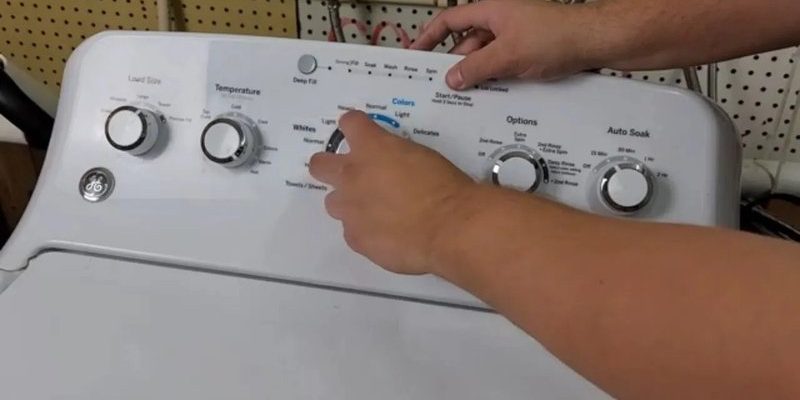
Washing machines are like household superheroes, quietly dealing with our laundry woes day in and day out. But just like us, they can occasionally get overwhelmed or encounter hiccups. The LE error code is one such hiccup, often signaling issues with the motor or the load. But fear not, resetting your machine might just be the easy fix you need to get it back up and running.
Understanding the LE Error Code
First things first, let’s tackle what the LE error code actually means. In simple terms, the ‘LE’ stands for ‘Locked Motor Error’. Think of it like this: If your washing machine were a car, the LE error would be akin to your engine having trouble picking up speed. It suggests that something is preventing the motor from functioning correctly — maybe it’s overworked or there might be a blockage.
Why does this happen? Well, imagine loading your washing machine with a bit too much laundry, just like stuffing a suitcase until it barely zips. If the load is too large or unbalanced, the machine struggles to spin efficiently, triggering the error. Also, if there’s a power surge or the motor has aged, these could become pesky culprits too.
Here’s the deal: Recognizing the LE code is the first step in troubleshooting. Understanding that it relates to the motor helps you deduce potential causes and solutions, allowing you to address the problem without immediately calling in professional help, saving you time and money.
How Resetting Can Help
So, you might be wondering, “Can a simple reset really solve this?” The answer is, sometimes, yes! Resetting your washing machine is akin to rebooting a sluggish computer. It clears out temporary glitches and gives the machine a fresh start.
Let’s walk through a basic reset. First, unplug your washing machine from the power source. Waiting for a couple of minutes is crucial as it allows the machine’s memory to clear completely. After your brief wait, plug it back in and turn the machine on. This process can often reinitialize the motor and clear the LE error code.
Now, why does this work? Often, electronics can become confused by power fluctuations or overloads. Just as a good nap can revitalize a person’s energy, a reset helps the washing machine regain its bearings. It’s a simple step worth trying before diving into more complicated fixes or calling for professional service.
When Resetting Isn’t Enough
What if resetting doesn’t solve the issue? Well, it might be time to roll up your sleeves for further investigation. Sometimes, the error may persist due to more tangible problems, such as an excessively packed load. Try redistributing the clothing more evenly across the drum or removing a few items to ease the burden on the motor.
If the load isn’t the issue, another common cause could be the washer’s drive belt. Think of it like a bicycle chain that links the pedal to the wheels – if it’s loose or damaged, the motor struggles to perform. You might need to inspect and adjust or replace this belt to resolve the problem.
There are also cases where the motor could be genuinely faulty, especially if the washer is older. In these scenarios, contacting a repair technician might be the best course of action. They can diagnose and address more complex issues such as electrical failures or worn-out components.
Preventing Future LE Errors
Wouldn’t it be nice to avoid seeing the LE error again? The good news is, with a few preventative measures, you can! Start by being mindful of your laundry loads. Like when packing a suitcase, leaving some breathing room ensures the machine operates smoothly.
Regular maintenance is also key. Cleaning filters and preventing lint build-up can ensure that your washer performs optimally. And occasionally, run an empty cycle with a washing machine cleaner. This helps maintain the internal components and prevents unwanted residues from causing hiccups.
Lastly, consider your washing machine’s age and usage. If it’s getting on in years, it might be time to consider an upgrade. Newer models typically offer efficiency improvements and may even come with enhanced diagnostics to prevent such errors.
In conclusion, while the LE error code might initially feel like a daunting obstacle, understanding the issue and knowing how to perform a reset can be a quick and practical solution. And with a bit of care and maintenance, you can keep your trusty GE washing machine humming along smoothly for years to come.
